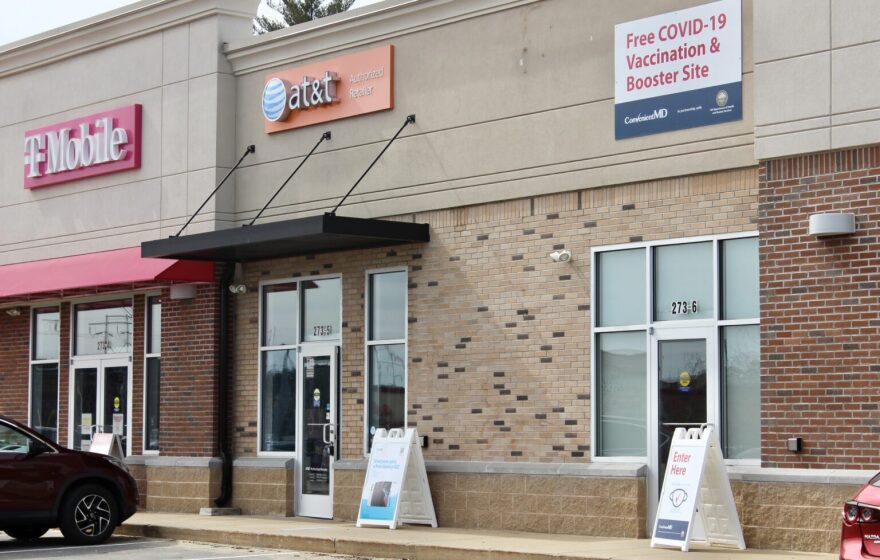It looked like exceptionally good news Wednesday when the state reported just seven COVID-19 hospitalizations, far fewer than the 20 to 25 reported over the prior week. It was good news – just not the whole picture.
That drop reflected the state’s new way of defining COVID-19 patients, not the number of COVID-19 patients hospitals say they are treating. They put that number at 104 Wednesday – 74 of whom are no longer infectious but too ill to be discharged.
That more complete count is crucial, hospitals say, to measure the true burden COVID-19 is putting on the hospitals, especially when that burden limits their ability to care for non-COVID-19 patients.
“The total number of people hospitalized with confirmed COVID-19 is one of the most important metrics in monitoring the severity of illness and the prevalence of COVID-19 in the state,” said Vanessa Stafford, New Hampshire Hospital Association spokeswoman, said in an email.
The state feels differently.
In an announcement Tuesday, the Department of Health and Human Services said it had redefined COVID-19 hospitalization to include only patients being treated with remdesivir or dexamethasone, drugs used for hospitalized patients with moderate to severe illness. Those hospitalized with milder symptoms or primarily for another cause are no longer included – even if they continue to take up a hospital bed because they are too ill to be discharged.

The change is part of a national trend and one backed by the Biden administration in February. Separating out cases involving severe disease, the administration said, gives public health officials a more nuanced picture of COVID-19’s impact and, thereby, a better guide for policy decisions. Remdesivir and dexamethasone are useful markers, said James Potter, executive vice president of the New Hampshire Medical Society, because it can be a challenge to differentiate between a primary COVID-19 diagnosis and an underlying condition that has been ignored or delayed – when the patient tests positive for COVID-19 and needs immediate treatment for the chronic condition. He sees it as an additional diagnostic marker, not a substitution for other metrics.
That clarity prompted New Hampshire to do the same, said Dr. Jonathan Ballard, chief medical officer at the Department of Health and Human Services.
A surge in patients suffering severe illness, he said, may prompt the state to again provide hospitals reinforcements like the National Guard troops and short-term strike teams it deployed when hospitalizations peaked at about 430 earlier this year. An increase in milder or moderate cases may not require the same level of response, he said.
“It allows us to implement response strategies to ensure there is capacity,” Ballard said. Potter hopes that true. He said politics have cost the state time, money, and lives. In the months immediately after the state delayed accepting federal money to expand vaccination efforts, it took four to six weeks to get a vaccination appointment, he said. In that time, nearly 2,000 Granite Staters died, he said.
“Looking at the scientific data, our legislative leadership needs to be accountable for at least two-thirds of the loss of life and hospitalizations during this period,” Potter said. “This was both preventable and inexcusable.”
Ballard likened New Hampshire’s new approach to hospitalization counts to that of Massachusetts and other states.
But there is a notable difference.
Massachusetts, Maine, and Vermont are reporting all hospitalizations on their dashboards. Massachusetts and Maine separate out severe cases. New Hampshire is not doing the same.
Under the hospitalization tab on the state’s COVID-19 dashboard, only the new count is reported and tracked on a graph. Gone is the full count that was last there Monday. For a more complete picture of COVID-19 hospitalizations, the dashboard directs visitors to the New Hampshire Hospital Association’s tracker.
And anyone looking for the counts going back to March 2020 will have to click on the fine print that says, “archived hospitalization data.”
The state’s new definition of COVID-19 hospitalization distinguishes a patient hospitalized for COVID-19 and those hospitalized for something else and who test positive for COVID-19, Ballard said. He said eliminating the latter does not diminish the demand the latter put on hospitals.
The hospitals disagree.
They argue that all COVID-19 patients increased demand on hospitals because they sometimes need their own rooms, remain in ICUs for days, and require staff to don and doff protective equipment each time they enter their rooms to reduce transmission, a costly and time-consuming process.
Stafford said the association has no plans to change its reporting.
“Ultimately, the challenge for New Hampshire is how we effectively respond to endemic surges and new variants,” Potter said. “My hope is that the state can effectively pivot and quickly immunize the most vulnerable populations in advance of COVID surges to mitigate deaths and hospitalizations, rather than waiting for proof of another round of carnage. We didn’t do so well this past fall and winter with the delta and omicron variants.”
With this week’s federal clearance of a second COVID-19 booster dose, Potter sees an opportunity to do a better job mitigating the anticipated surge of the new omicron BA.2 variant by expanding full vaccination to the most vulnerable populations. “If we wait, delay, or ignore, (that challenge) gets much more complicated,” Potter said. “… That’s what is keeping me up at night.”
New Hampshire Bulletin is part of States Newsroom, a network of news bureaus supported by grants and a coalition of donors as a 501c(3) public charity. New Hampshire Bulletin maintains editorial independence.
Contact Editor Dana Wormald for questions: info@newhampshirebulletin.com. Follow New Hampshire Bulletin on Facebook and Twitter.






